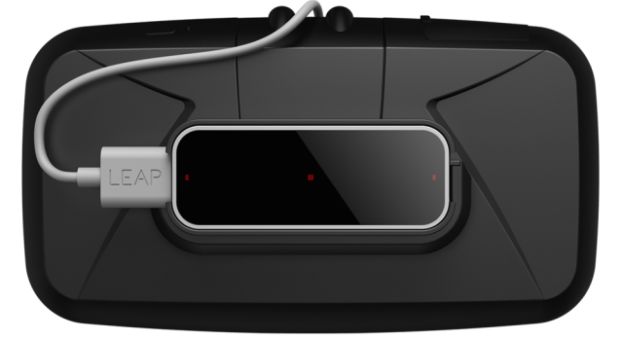While the Oculus VR headset continues to attract plenty of interest from game companies, there are still hurdles to overcome before the device can become a consumer product. One of the major difficulties is control. Using a standard game controller such as you might find on a console is difficult, because you can’t see the buttons. Moreover, using such a controller will tend to pop you out of the immersive fantasy that you’re in another world, which is exactly where the Oculus Rift would like you to remain. What’s the answer
While Oculus has already purchased a company that makes modified Xbox 360 controllers, other companies have proposed a variety of solutions in an effort to become the standard way to control a VR experience. Now Leap Motion has stepped forward with an inexpensive method that seems to solve many of the problems noted with control schemes.
Leap Motion makes a gesture-detecting sensor for the PC and Macintosh platforms, and they have created a mount that holds ther sensor on the front of any flat VR headset – such as the Oculus Rift, in either developer version so far – for only $20, while the sensor itself is $80.
The Leap Motion sensor is extremely precise, and can track all ten of your fingers in their position with the most recent version of their software. The current model uses infrared cameras, but the company is experimenting with a version that also has color cameras.
“With the infrared, we track the hands, and with the color, we’ll show you the rest of the world,” said CTO David Holz. “In the future, you can imagine a camera like this could track your position in the room.” Developers will be able to grab the sensor data coming from the Leap Motion and integrate it into their software, making your VR experience fully aware of your hand positions and head motions. Thus, if you wanted to swing a sword or fire a pistol, you’d merely make the appropriate gesture with your hands.
Will this be the interface technology that VR has been looking for What do you think
Source: Re/code

